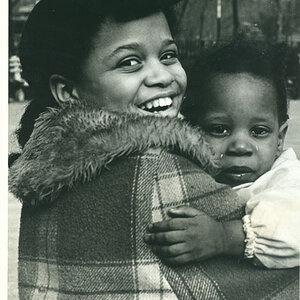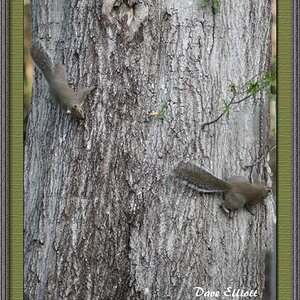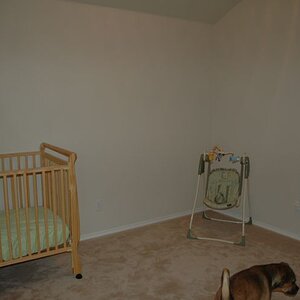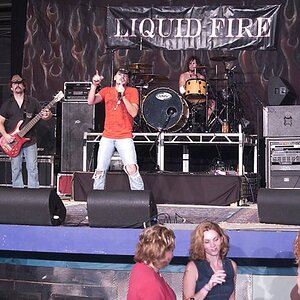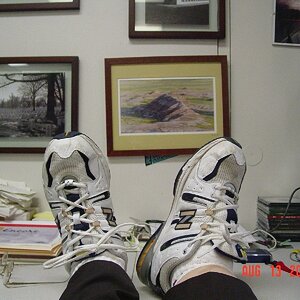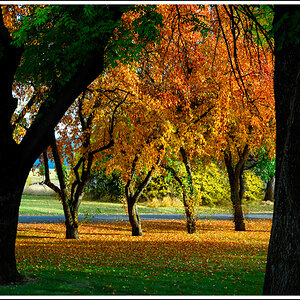D-B-J
Been spending a lot of time on here!
- Joined
- Apr 13, 2010
- Messages
- 9,027
- Reaction score
- 2,175
- Can others edit my Photos
- Photos OK to edit
Thans for the info...by inverting a GND do you mean covering the lens with the dark part of the GND?I don't, but there's no need to use spot metering for this. Look at the image on the LCD, inspect the color histogram (not just general brightness, but brightness for each channel) and see if that works for you. An even easier way to do this is with Live View. I think Jimmy McIntyre has at least one tutorial about how to shoot and set up the camera for digital blending.If I do go the multiple exposure route, I'm not sure how to spot meter on the K-3. You don't shoot Pentax by any chance, do you?I would not recommend a graduated ND filter for that purpose, because it isn't what it's made for. A solid neutral density filter is much more practical for that purpose, as it is exactly what it's made for.
I wouldn't even get a GND for its intended purpose, as digital photography allows for other tools, such as HDR or my preferred method, "manual" blending in Photoshop using Jimmy McIntyre's Luminosity Masks. If you have to get it all in one exposure (e.g. if you shoot for National Geographic, which I bet you don't…), a GND may be useful, though with the great dynamic range the Pentax K-3 provides in Raw files you may not even need it at all.
Well, to answer that I will just use your own explanation, which summed it up pretty well:Could you elaborate? What "isn't the purpose a G-ND is made for", and while I agree that software gives us a lot more options than we used to have, there's a lot to be said for getting the image right in-camera.I would not recommend a graduated ND filter for that purpose, because it isn't what it's made for. A solid neutral density filter is much more practical for that purpose, as it is exactly what it's made for.
I wouldn't even get a GND for its intended purpose, as digital photography allows for other tools, such as HDR or my preferred method, "manual" blending in Photoshop using Jimmy McIntyre's Luminosity Masks. If you have to get it all in one exposure (e.g. if you shoot for National Geographic, which I bet you don't…), a GND may be useful, though with the great dynamic range the Pentax K-3 provides in Raw files you may not even need it at all.
Buying one strong ND would be cheaper than buying a complete set of graduated NDs. For the kind of exposure lengths the OP wishes to use—around 20 seconds—stacking graduated NDs, each reducing up to 3 stops (I'm not aware of any GND that blocks over 3 stops of light, but please correct me if I'm wrong), may require more filter units than anyone would actually ever use as GNDs, balancing brightness between two areas in the image.A G-ND is used to "even" exposure, that is reduce the difference between a shadowed foreground and a bright sky (at sunset/rise) or similar situations by reducing the amount of light which passes through a portion of the lens. A straight ND filter reduces the amount of light passing through the lens evenly.
For the record, I've found GND's to be incredibly valuable. I can drop in up to 3 filters (usually two GND's and a strong ND) on a sunset shoot and get a perfect exposure right in the camera. I've not understood the desire to want to post process and tone map and layer together--the minute it takes me to set up the filters and get a perfectly exposed shot is sooooooo much nicer than the hour it might take to try and layer those images together later in the software.
Also, they do make 4 stop GND's, but those are more of a specialty item rather than a commonplace filter.
Also, I've used a GND inverted as an ND. It works well, and I've even gotten away with it on my
16-35 on a full frame sensor. So, they can be used as a regular ND, if need be.
ALSO, spot meeting is EXACTLY what you need if you want to get the proper exposure using filters or layering. You need to meter for the different spots, so they're properly exposed. Matrix metering or center weighted wouldn't work for this application.
In addition to the regular histogram (I've never used the colored histograms), also pay attention to your blinkies(the info that blinks when the highlights are blown). Those are infinitely useful when doing long exposures to make sure your highlights aren't clipped.
Cheers!
Jake
Sent from my iPhone using Tapatalk
Exactly!
Sent from my iPhone using Tapatalk


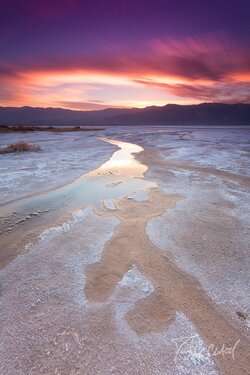

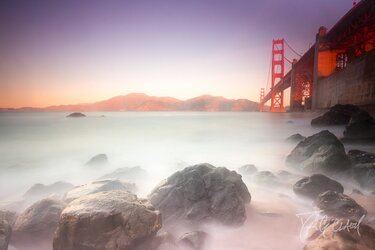
![[No title]](/data/xfmg/thumbnail/41/41897-ea48d59eea1540d700b6e9051bce38da.jpg?1619739935)
![[No title]](/data/xfmg/thumbnail/41/41901-789e8104ff95e5862c8f07611e3c34c0.jpg?1619739938)
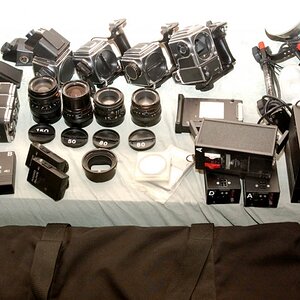
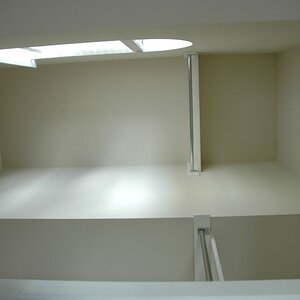
![[No title]](/data/xfmg/thumbnail/39/39440-bc17565eb7adee7f9859c53933e8543c.jpg?1619739033)
